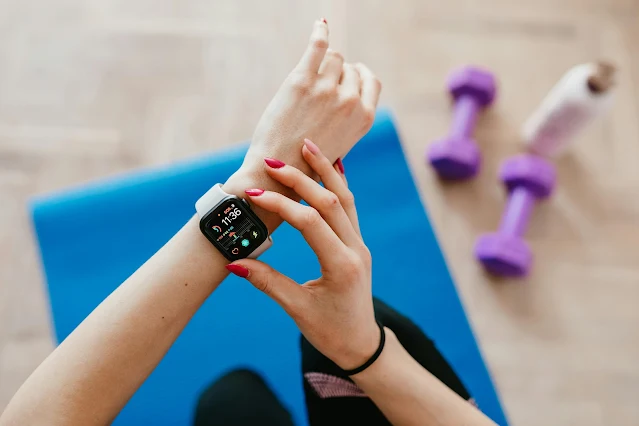In today's fast-paced world, staying fit and healthy is more critical than ever. However, finding the motivation to maintain a consistent workout routine can be challenging. Enter gamification – a game-changing approach that leverages the engaging and rewarding elements of games to transform the way we approach fitness. With the advent of smart devices, gamification has seamlessly integrated into our daily lives, making fitness not only accessible but also enjoyable. This article explores how gamification on smart devices is revolutionizing the fitness industry and highlights the leading brands driving this change.
The Rise of Gamification in Fitness
Gamification refers to the application of game-design elements in non-game contexts. In the realm of fitness, this means incorporating points, badges, leaderboards, and other game-like features into workout routines to motivate and engage users. The goal is to make exercise more enjoyable, encourage consistency, and ultimately, help individuals achieve their fitness goals. Smart devices, including smartphones, wearables, and fitness apps, have become the perfect platforms for gamification. These devices offer the necessary technology to track physical activity, provide real-time feedback, and create immersive, interactive experiences.
How Gamification Transforms Workouts
Enhanced Motivation and Engagement
Rewards and Achievements: Gamified fitness apps often include reward systems that provide users with points, badges, or virtual trophies for completing workouts, reaching milestones, or maintaining streaks. This creates a sense of accomplishment and encourages users to keep pushing their limits.
Competition and Social Interaction: Leaderboards and social sharing features enable users to compete with friends, family, or even strangers. This competitive element adds an extra layer of motivation, as users strive to climb the rankings and outperform their peers.
Personalized Fitness Experience
Tailored Challenges: Many fitness apps use data analytics to create personalized workout plans and challenges based on the user's fitness level, goals, and preferences. This ensures that the workouts are both effective and enjoyable.
Adaptive Feedback: Smart devices provide real-time feedback on performance, allowing users to adjust their workouts on the fly. This immediate response helps users improve their form, increase intensity, and avoid injury.
Increased Accessibility
On-Demand Workouts: Gamified fitness apps offer a wide variety of on-demand workouts that can be accessed anytime, anywhere. This flexibility makes it easier for individuals to fit exercise into their busy schedules.
Cost-Effective Solutions: Many gamified fitness apps are available for free or at a fraction of the cost of a gym membership. This affordability makes fitness accessible to a broader audience.
Turning Workouts into Playgrounds: Gamification Elements at Work
Gamification incorporates game-like elements such as points, badges, leaderboards, challenges, and rewards into non-game contexts, like fitness. These elements tap into our natural desire for competition, achievement, and social connection, making exercise more engaging.
Points and Badges: Earning points for completing workouts or reaching goals provides a sense of accomplishment and motivates users to push further. Apps like Nike Training Club and Peloton award badges for milestones, adding a playful element.
Leaderboards: Friendly competition against friends or a global community on leaderboards in apps like Strava or Fitbit keeps users motivated and striving to improve.
Challenges: Gamified apps offer daily or weekly challenges, encouraging users to try new activities or break personal records.
Rewards: Virtual rewards like unlocking new workout programs or customized avatars in apps like Zwift add a layer of fun and incentivize continued engagement.
Benefits of Gamified Fitness
Gamification in fitness offers a multitude of benefits for the modern generation:
Increased Motivation: The interactive and engaging nature of gamified workouts makes exercise more enjoyable, leading to higher motivation and consistency.
Improved Adherence: Gamification elements like challenges and streaks help users stick to their fitness goals and avoid plateaus.
Personalized Experience: Many apps personalize workout plans based on user preferences and progress, making the experience more engaging.
Social Connection: Gamified fitness apps can foster a sense of community through leaderboards and group challenges, motivating users through social interaction.
Data-Driven Insights: Smart devices track workout data, providing valuable insights into progress and allowing users to adjust their routines for optimal results.
Brands Redefining Fitness Through Gamification
Several innovative brands are leading the charge in integrating gamification with smart devices to redefine the fitness experience:
- Nike Training Club: Offers a diverse range of workouts with rewards and achievements, personalized coaching, and the ability to compete with friends.
- Fitbit: Renowned for comprehensive fitness tracking with gamified challenges, social competitions, and personalized goals.
- Strava: Transforms running and cycling into a social and competitive experience with activity tracking, leaderboards, and community challenges.
- Zombies, Run!: Turns running into an immersive adventure game with missions, supply collection, and an engaging storyline.
- Cult.fit: This popular Indian fitness platform offers a variety of gamified workout classes, from dance fitness to strength training, all with interactive elements and social challenges.













.png)

No comments:
Post a Comment